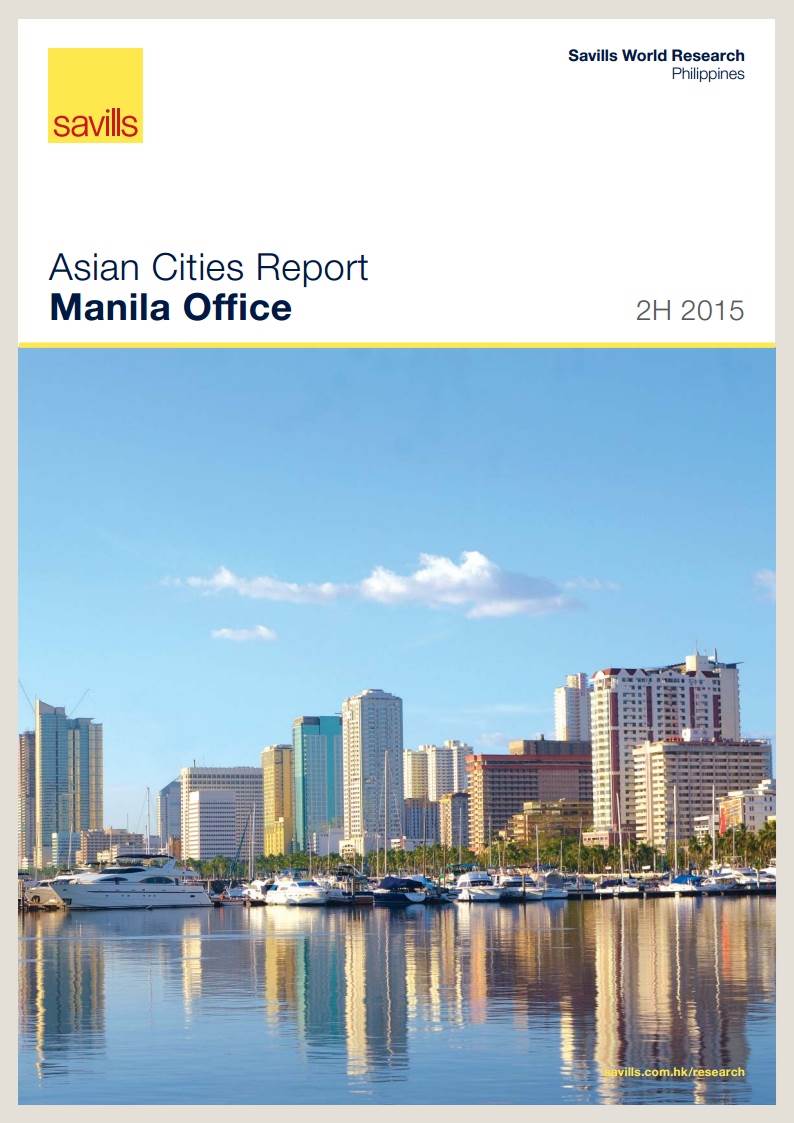
Reading Time: minutes
KMC MAG Group and its international associate, Savills, has just released its bi-annual Asian Cities Report for Manila Office. The report, which covers the second half of 2015, features key market updates on the local office sector.
Strong Economic Fundamentals Continue to Support Industry Growth
With the Philippine economy growing at 5.6%, Manila is still hailed as one of the region's bright spots despite the figure's deceleration from 6.1% from 2014. In spite of this, the Philippines is still one of the fastest growing economies in the Asia-Pacific Region with a highly positive outlook.
The economy is buoyed by strong private consumption, steadily growing OFW remittances, the booming outsourcing industry and strong services sector, as well as relatively low levels of foreign investment, making the market well-protected against external shocks around the region as well as the world. Domestic liquidity continues to be well-managed by the Banko Sentral ng Pilipinas (BSP) however there is still room for lower monetary policy rates. Overall, the economy is expected to accelerate in 2015 from the previous year with growth expected to be between 6.0% - 7.0%, still much higher than the expected global growth rate of 3.0% and 4.8% for developing economies.
Manila Offices Continue to See Rapid Expansion
Due to the lack of space in the Makati CBD, developers look towards other submarkets for their expansion plans. The main focus remains on Bonifacio Global City (BGC) but there is increased interest in other emerging submarkets such as Quezon city and the Bay Area.
The occupier market continues to perform strongly, driven by the IT business process outsourcing (IT-BPO) industry. Take-up is expected to reach 400,000 sq m with no signs of slowing down. Rents on the other hand have still been growing rapidly (5.4% YoY for Q2/2015) but is tempered by supply factors and a rather large pipeline of space. In a market where a significant share of leasing transactions are still focused on pre-leasing, this results in a better negotiation position for occupiers as well as relatively good terms with the luxury of time.
New Supply Concentrated in BGC
Much of the upcoming new supply will be concentrated in BGC while new developments in other areas are widely scattered among the main business districts. This is due to the fact that traditional CBDs (such as Makati) cannot handle the amount of demand of real estate coupled with the fact that the outsourcing industry is somewhat price sensitive. In search of cheaper occupancy costs, locators are now more open to locate in secondary districts with cheaper real estate costs.
In Makati, the redevelopment of the Ayala Triangle and the City Gate Complex will add more new stock of the traditional and headquarters-type variety but will not be available until 2018. Until then, companies are forced to look towards other options such as BGC, Alabang, Ortigas, and the Bay Area.
Supply is expected to peak in 2016, with 630,000 sq m expected to be introduced to the market (340,000 sq m in BGC alone), creating a downward pressure in rental growth. However, almost half of these spaces are already pre-leased, encouraging developers to maintain the current construction activity.
Land Deals, More Than Office Acquisitions, Drive Investment Market
In the asset market, investment activity is focused on developments and transaction volumes have been dominated by land deals with only one or two office transactions through a year. This year's largest office deal was the sale of Tower 6789 for close to Php 7.0 billion. The lack of available assets still continues to stop investors from executing deals, especially those from overseas. Due to this and positive future expectations, have kept prime yields on a downward trajectory, ranging from 7.5% - 8.5%.
As transaction volumes remain low, investors and property owners are seeking returns from investments in construction and redevelopments. Due to measures from the BSP to limit the credit exposure of local banks. investors are now more open to exploring alternative sources of financing.
Outlook for the Manila Office Sector Remains Bullish
With the strong economic performance and forecast, the real estate sector is expected to perform well across all sectors. The construction activity in Metro Manila is seen to remain robust as developers continue to expand their footprint. Large-scale township projects remain as the major trend, spreading the commercial focus away from main CBDs owing to the convenience that these developments offer to companies and their employees.
The IT-BPO industry is expected to continue to drive the strong demand in the office sector, as global firms continue to seek reduced costs. With sustained demand, modest rental growth and a low vacancy rate, the office pipeline is expected to be absorbed and yields expected to remain attractive for core assets over the next few years.
Overall, the outlook for Manila's office sector remains bullish, with rents and capital values forecast to grow by 5% - 7% over the next 12 months.

